Sources of voltage
A dry cell, like the one used to power a flashlight, converts chemical energy into electrical energy. The chemical reaction in the cell produces a potential difference - the source of energy that pushes electric charges through a circuit - between the terminals of the cell.

Cells can be connected together to make a battery. The voltages add together when the cells are in series.
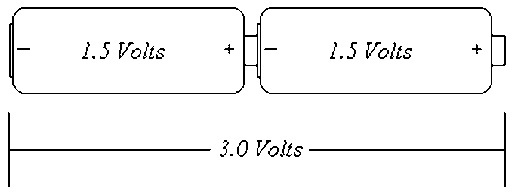
When a circuit is completed, that is, when a path is created from one end of the battery to the other, electrons will steadily flow.

Electric Current
The flow of electrons is called electric current.

Current is the flow rate of charge and is measured in Ampères, commonly called Amps. Note that the Amp is a fundamental unit. Charge is defined in terms of Amps and seconds.
Mathematical current vs. electron flow
In a wire, electrons will flow from the negaive terminal to the positive terminal, as directed by the force from the electric field, E, in the wire.

However, mathematically, the convention is that positive current, I, flows from positive to negative.
Resistance and Ohm's Law
The size of a current that flows in a circuit is directly proportional to the voltage in the circuit. The greater the voltage, the greater the current.
The current is indirectly proportional to the resistance of the wire in the circuit, and to the resistance of the devices in the circuit.

Together these concepts make up Ohm’s Law.

Not all devices (resistors) obey Ohm’s Law. This law only applies when resistances are constant. Resistance often depends on temperature. Metals become hot when electricity passes through them, and so many metals are non-ohmic. What causes resistance? Metals are good conductors because they have many unbound electrons that are free to move from atom to atom in the metal. When a voltage is applied across the metal, there is an electric field in the metal, and the electrons will move from “--” to “+”.
However, this flow of electrons is not unimpeded. These electrons bump and collide with ions in the metal creating resistance and generating heat.

The following factors affect the resistance of conductors:
- Length: longer wires have more resistance
- Cross-sectional area: thicker wires have less resistance
- Type of metal: some metals have more resistance than others
- Temperature: higher temperatures cause greater resistance
These factors listed above have been quantified for different materials into a physical property called the resistivity, ρ (measured in Ωm) of the material.
The resistance, R, of a material can now be calculated given the length of the material, L, its cross sectional area, A and its resistivity, ρ.
| Material | Resistivity |
|---|---|
| Silver | 1.59 |
| Copper | 1.68 |
| Gold | 2.44 |
| Aluminum | 2.65 |
| Tungsten | 5.60 |
| Iron | 9.71 |
| Platinum | 10.6 |
| Mercury | 98.0 |
| Nichrome | 100. |
Example - Speaker Wires
The diameter of the wire is related to the cross sectional area by the formula A=πd2/4.
The diameter of the wire should be d=2.1mm.
Measuring voltage, current and resistance
Voltage
The device to measure voltage is called a voltmeter. Recall that voltage is potential difference and thus is a measurement of the energy available per charge between two points. The leads coming off the voltmeter should be placed across the component in the circuit where you wish to measure the voltage drop.
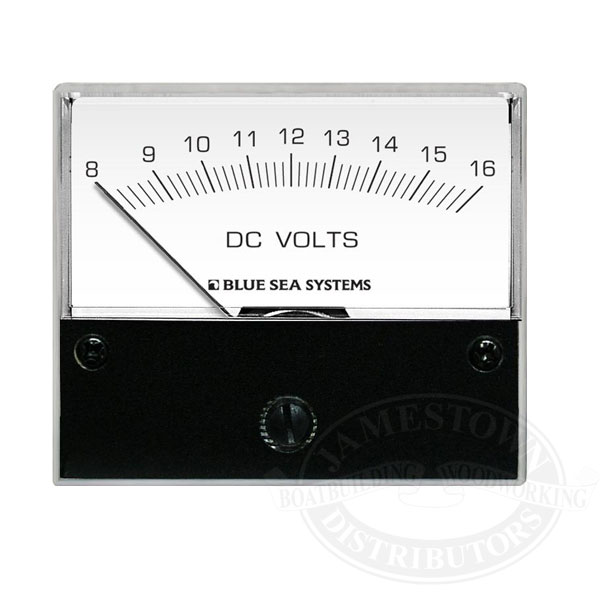
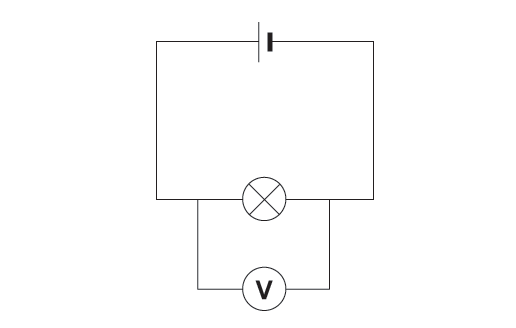
In order for the voltmeter not to interfere with the circuit, the resistance of a voltmeter is very high, so that only a very little of the current flow through it.
Current
The device to measure current is called an ammeter. This device measures that amount of charge per second that passes a point in a wire. An ammeter must be placed in the circuit. The circuit must be opened and the hole filled with the two probes from the ammeter.
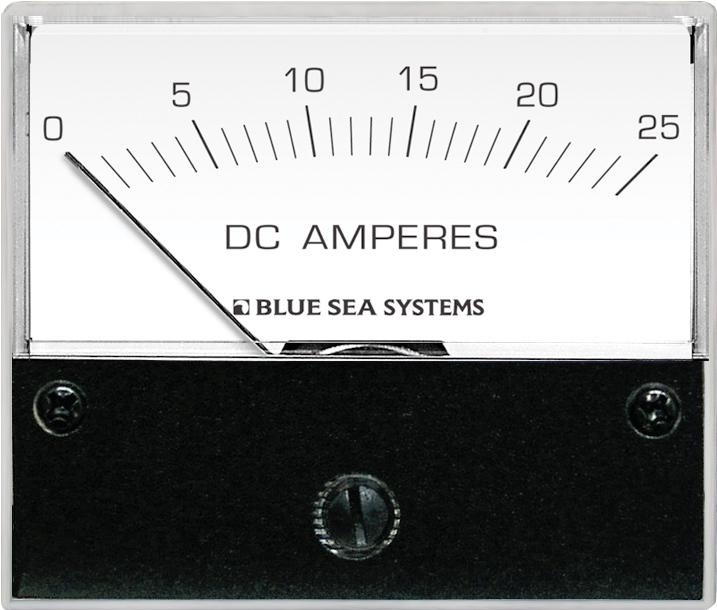
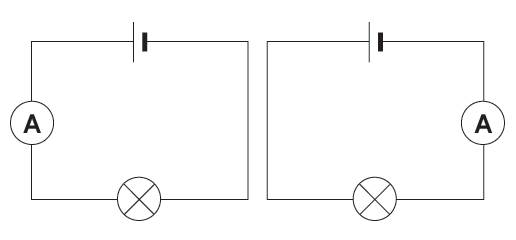
In order not to interfere with the circuit, the resistance of an ammeter is very low.
Resistance
Resistance can be measured with a device called a multimeter, which measures voltage and current as well as resistance.

To measure resistance, the component is usually removed from the circuit and attached to the probes of the multimeter. A current is sent through the component from the multimeter and a resistance value is calculated then displayed on the screen.
Examples
- Draw a simple circuit using circuit symbols containing
- a battery of 3 cells,
- a light bulb,
- a voltmeter measuring the voltage across the battery,
- a voltmeter measuring the voltage across the light bulb,
- an ammeter measuring the current leaving the battery,
- an ammeter measuring the current entering the battery,
- the symbol I with an arrow showing the direction of mathematical current
- What is the resistance of a component that draws 4 A of current when attached to a 12 V battery?
- What is the current through a 150 Ω resistor when connected to a 12V battery?
- What voltage is across a 1400 Ω resistor that carries a current of 0.5A?
click here for solutions